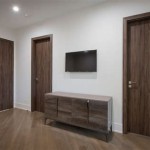1920s Interior Design Ideas: A Guide to the Jazz Age Aesthetic
The 1920s, a period known as the Jazz Age, was an era of dramatic change in society, and interior design reflected this shift. Gone were the ornate Victorian styles of the previous century; in their place came a modern, streamlined aesthetic that embraced simplicity, geometric shapes, and a sense of liberation. This article explores key elements of 1920s interior design, offering insights into the trends that defined the era and how they can be incorporated into contemporary spaces.
Embrace Geometric Shapes and Patterns
One of the most defining features of 1920s design is the ubiquitous use of geometric shapes and patterns. This was a reaction against the elaborate and floral motifs of the Victorian era. Instead, designers focused on clean lines, bold angles, and abstract forms. This is evident in everything from furniture to textiles, with Art Deco geometry dominating the scene. Think zigzag patterns, chevrons, sunbursts, and repeating geometric motifs. These elements were often incorporated into wallpaper, rugs, and upholstery fabrics. Even furniture design embraced the geometric aesthetic, with pieces featuring sharp angles, angular legs, and geometric inlays.
The Rise of Art Deco Influence
Art Deco, a movement that emerged in the 1920s, had a profound impact on interior design. Characterized by its opulent materials, luxurious finishes, and bold geometric patterns, Art Deco resonated perfectly with the spirit of the Jazz Age. This style embraced a sense of extravagance and sophistication, using materials such as lacquered wood, metal, and glass to create furniture and decorative objects that were both beautiful and functional. Art Deco furniture often featured sleek curves, intricate details, and the use of exotic materials like ebony and ivory.
Beyond furniture, Art Deco influences can be seen in other aspects of 1920s interior design, such as lighting. Chandeliers with geometric shapes and bold colors, as well as lamps with geometric bases and metal accents, were popular choices. Art Deco also influenced the use of color in interiors. While muted tones were prevalent, bright and bold accent colors like emerald green, sapphire blue, and ruby red were used to create dramatic contrast and add a touch of vibrancy to the space.
Modernism and Functionalism
While Art Deco embraced a sense of luxury, another key trend in 1920s interior design was the embrace of modernism and functionalism. This movement emphasized simple, clean lines and a focus on practicality. Furniture design became more streamlined, with pieces that were designed to be both comfortable and functional. This approach prioritised utility over ornamentation. The focus on functionality also extended to other aspects of the home, with built-in storage and efficient layouts becoming increasingly popular. This was a response to changing lifestyles and the need for more efficient and modern living spaces.
The use of materials like chrome, steel, and glass reflected this modern aesthetic. Furniture pieces with exposed metal frames and glass surfaces were popular choices. This trend also embraced the use of new technologies, such as Bakelite, in the design of furniture and decorative objects. This period saw the rise of the modern living room, where comfort and functionality took precedence over traditional formality.
Incorporating 1920s Interior Design Elements Today
While the 1920s are long gone, the era's design aesthetic continues to inspire modern interiors. The key to integrating these elements into contemporary spaces lies in balancing historical accuracy with a modern sensibility. To create a space that feels authentically 1920s, consider incorporating elements like: *
Geometric patterns:
Use geometric patterns in wallpaper, rugs, or upholstery fabrics. *Art Deco furniture:
Choose furniture pieces with sleek curves, intricate details, and luxurious finishes. *Modern lighting:
Incorporate geometric or Art Deco-inspired lighting fixtures into the space. *Bold color accents:
Use bold colors like emerald green, sapphire blue, or ruby red to add a touch of vibrancy to the space. *Use of materials:
Use materials like chrome, steel, and glass to create a modern and streamlined look.While incorporating these elements, it is essential to balance them with contemporary design elements, creating a space that feels both elegant and timeless. With careful planning and an eye for detail, it is possible to create a space that evokes the glamour and sophistication of the Jazz Age while still feeling fresh and modern.

1920s Style Decorating Ideas For An Art Deco Look

Art Deco Interior Design Reviving Elegance In Your Home Decorilla

110 Best 1920s Home Decor Ideas House Vintage

30 Best 1920s Interior Design Ideas You Should Check

Greenwich Home That Will Fall In Love With 1920s Georgian Style Hommés Studio

Flickriver Photoset Living Rooms Family By American Vintage Home

A 1920s Colonial In Merion Gets Modern Update

Most Popular 1920s Interior Design Ideas

Art Deco Interior Design Reviving Elegance In Your Home Decorilla
The Biggest Home Trends Over Last 100 Years From 1920 To 2024 Business Insider








